Learn seven benefits of using the color of the day in your home or classroom. (First published on June 29, 2015; this post is regularly updated and republished to improve the content.)
One of the many ways to improve our lives and our children’s lives is to observe the colors of the day, where each day of the week has a corresponding color. Following the color of the day can benefit everyday life in several ways. Not only can colors affect moods and evoke certain emotions, but they can also be used to create stability and order in our daily lives. Scroll down to learn the color for each day of the week and how adding the lucky colors of the day to your daily rhythm or routine can help you and your children (or students) live better lives.
What Does Color of the Day Mean?
In Waldorf education, different colors are assigned to each day of the week to help parents, teachers, and caregivers bring a sense of rhythm, harmony, warmth, and comfort to a young child’s daily life and into their world. Children feel calmer and a lot less anxious when they know what to expect from moment to moment and day to day.
Rudolf Steiner, the founder of Waldorf Education, shared the importance of creating a strong daily rhythm and weekly routine with parents and educators worldwide. He believed that following daily, weekly and seasonal rhythms were important for supporting the healthy growth and development of the child.
Steiner encouraged parents, teachers, and caregivers to create more rhythm in our lives in several ways. One of which is following the Waldorf colors of the week, where each day of the week is associated with a specific planet or celestial body in our solar system and a corresponding lucky color for the day.
Although the same planets for each day of the week are the same in Vedic Astrology, the color for each day is different. What colors are the days of the week? The Vedic Astrology and Waldorf colors for each day of the week are listed below. Scroll down to find out!
What is the color for each day of the week?
Have you ever wondered what color day is today? Or have you ever wanted to know what the color of the day is? The list below shares the Waldorf color of the day for each day of the week. Scroll past the list of daily colors to see a color chart for each day of the week.
The colors for each day of the week in Waldorf Education are as follows:
- Sunday is White Day (white color, off-white, cream color, creamy white, etc.)
- Monday is Purple Day (lavender, violet, wine, etc.)
- Tuesday is Red or Pink Day (light red, dark red, maroon, brick red, etc.)
- Wednesday is Yellow, Beige, or Tan Day (mustard yellow, lemon, citron, etc.)
- Thursday is Orange or Brown Day (light orange, dark orange, amber, bronze, etc.)
- Friday is Green Day (verdant green, light green, dark green, pista green, emerald, etc.)
- Saturday is Blue Day (light blue, dark blue, royal blue, aquamarine, turquoise, navy blue, indigo, metallic blue, etc.)
Why aren’t the colors of the days of the week in rainbow order?
The colors of the days of the week are not in rainbow order because the days of the week are named after celestial bodies in our solar system. There is a specific color associated with each planet, but they do not follow a rainbow order. While Vedic astrology has the same planets associated with each day of the week, the colors that are designated for each day are different.
The colors Rudolf Steiner chose for Waldorf Education were designed to be more inclusive of each color in the rainbow. He felt that children needed to experience each color equally instead of favoring a few while abandoning others.
In other words, the daily colors may not be in rainbow order, but at least each one is fully represented for one day each week, unlike the color of the day in Vedic Astrology. And as someone well-versed in yoga and the Vedas, I understand and prefer his chosen colors for each day of the week.
What celestial body or planet is associated with each day of the week?
The celestial body or planet and the color associated with each day of the week in Waldorf Education and Vedic astrology are as follows:
- Sunday: Sun (White in Waldorf Education; red for Vedic Astrology.)
- Monday: Moon (Purple for Waldorf education; white for Vedic Astrology)
- Tuesday: Mars (Red for Waldorf education; red for Vedic Astrology)
- Wednesday: Mercury (Yellow for Waldorf education; green for Vedic Astrology)
- Thursday: Jupiter (Orange for Waldorf education; yellow for Vedic Astrology)
- Friday: Venus (Green for Waldorf education; pink, whites, and light purples for Vedic Astrology)
- Saturday: Saturn (Blue for Waldorf education; black or dark blue for Vedic Astrology)
Scroll down to see the seven benefits of using the Vedic Astrology or Waldorf colors for the week. If you’re curious, learn more about the planets, colors, and gemstones that correspond with each day of the week in Vedic astrology or Jyotish–> HERE.
Related: Calm Down DIY Sensory Bottles 101
What Colors Represent the Days of the Week?
Want to see what color goes with each day? The graphic image below shows the Waldorf color for each day of the week to make it easy to see them all at a glance. It also makes it easier to know what color to wear each day of the week and use them in other creative ways in your daily and weekly rhythms and routines.
Get your own printable copy in Home & School Tools for Kids. But first, grab your copy of the QuickStart Weekly Planning Guide (if you haven’t already) because new subscribers get a sweet deal on the entire Family Systems Toolbox!
Waldorf Colors for the Days of the Week
How do you incorporate the color of the Day into your daily rhythm and weekly routines?
Children and caregivers can both benefit when a basic daily rhythm is followed. The Waldorf colors of the day can help parents and educators create a sense of rhythm and order in the home or classroom.
The Waldorf color of the day can help you add consistency to the days of the week with weekly routines associated with each day and its corresponding color. One way to do with is with household chores and cleaning schedules.
For example, Red Day is a vacuuming day, while Orange Day is the day you clean the kitchen. Another example of using the Waldorf colors of the week is with weekly activity routines. Purple Day is park day, and Yellow Day is when you do arts and crafts.
Another way to follow the Waldorf colors of the day in your home or classroom is to encourage your children to wear different things (clothing, hair accessories, a necklace, scarves, hats, etc.) with the day’s suitable colors. Or wear something with all the colors of the rainbow!
A specific color is associated with each day of the week in Waldorf education. But every day is Rainbow Day! Because rainbow-colored clothing contains each color of the day, you can wear rainbow-colored clothing any day of the week.
Read the seven benefits of using the color of the day below for more simple ways to incorporate them into your daily and weekly rhythm.
7 Benefits of Using the Color of the Day
Using the daily color and creating rhythm in the home (or classroom) can benefit the developing child in several ways. Add the colors of the week to your daily rhythm and weekly routine to help decrease tantrums and conflicts at home or school, make daily transitions a breeze, and help children learn, grow, and thrive!
There are several unique ways to observe or use the Waldorf daily color. For example, when my husband and I owned and operated a Waldorf-inspired childcare in our home, we wore the day’s color, occasionally did art and craft projects using the color of the day, and allowed the colors of the week to guide us through our daily routines and weekly rhythms.
As a result, we discovered the many benefits this had on the children we cared for. And how much easier it made our lives as parents and caregivers. We found seven benefits of using the Waldorf color of the day in our home, and maybe you can, too!
1. Getting dressed is easier for everyone when the Waldorf colors of the week are followed.
I find it much easier to get dressed in the morning when I only have to choose between items that are the Waldorf color of the day or have the daily color in them. Because instead of seeing an overwhelming abundance of clothing options, they change each day to reflect the day’s color.
This makes my wardrobe look new again every morning. And there are fewer items to choose from because my selections are limited to those with the Waldorf color of the day. It’s my own version of color therapy. In the past, I struggled with what to wear every morning, but now it’s a no-brainer, and I enjoy expressing my creativity as I get dressed each day!
Because fewer clothing options make it much easier to choose what to wear each and every day, and best of all, wardrobe options rotate daily to decrease wardrobe burnout, and less is now more. Wearing the day’s color has made my life so much easier. Even my mom and husband have joined the Color of the Day parade!
Wearing the color of the day also makes it easier to get kids dressed and ready Every Day
When we first started using the Waldorf colors of the week in our home, I gave my toddler two options each morning that contained the day’s color, and she pointed to one. Because she got to choose what to wear from only two choices, it became much easier for her to get ready in the morning.
Children like to feel in control, so choosing between two options made it easier to get her dressed. It also helped her feel like she was making high quality choices that put her in charge of her world. If you have a willful, spirited kid like mine, I promise you will find this simple trick a daily blessing. Because when children get to make a simple choice about what to wear, they want to get dressed. Are you beginning to see how well this works?
Now that she is older, she jumps out of bed, knowing the day’s color, and excitedly picks out an outfit with the color of the day in it. Or, she selects an accessory with the daily color, such as a hair bow. Visual routine cards are another great tool to help children stay on task and in rhythm.
Related: Rainbow Art Projects and Craft Ideas
2. Kids know what to expect when you use the Daily Color.
When you follow the color of the day in your home or classroom and have a daily routine and weekly rhythm in place, children learn what to expect on any given day.
For example, when we owned and operated a childcare in our home, we followed a Waldorf daily rhythm of rotating activities that corresponded with the Waldorf colors of the day. Over time, the children in our care learned that we did an indoor activity following breakfast and went outside before lunch. So after breakfast, the children learned to start the daily activity while I cleaned the kitchen.
We wore clothes with the day’s color to remind the children of the Waldorf daily color, and we color-coded the shelves so the kids would know which activity to start based on the color I was wearing. And not only did it work–it was a miracle!
After that, I was sold on the benefits of following a Waldorf daily rhythm and using the Waldorf colors of the week. Because implementing the color of the day and a daily and weekly rhythm was the best thing I ever did for my in-home childcare. The children thrived, and I kept my sanity. It doesn’t get any better than that!
Related: Nature Study for Kids
3. Following the Waldorf Daily Color can make transitions a breeze.
Children will learn the basic order of their day when you combine the Waldorf colors of the day with regular classroom (or homeschool) and household rhythms. Okay, maybe it’s a little less than a breeze sometimes. But most days are made easier when the colors of the week are followed.
Using the colors of the day makes the passage of time more visual for children and easier for them to understand. And when children know what to expect, they are better prepared for daily transitions so they won’t collapse at every turn of the stick.
But kids will still throw a tantrum here and there. It’s unavoidable, I’m afraid. But following a solid daily rhythm can help lessen the impact and turn those no-good, terrible, very bad days into a thing of the past.
Using a visual routine chart with visual routine cards can also be very helpful for young children (toddlers, preschoolers, kindergarteners, and young school-aged children) and children with special needs. And this list of self-regulation strategies for kids can also help make transitions easier, improve behavior, and keep emotional meltdowns at bay.
4. Kids learn the names of colors quickly and easily with the colors of the days of the week.
We never had to ‘teach’ our daughter her colors. She just picked them up naturally as we flowed from day to day and week to week using the Waldorf colors of the week. So she knew all the basic colors (and quite a few more) by the time she was 18 months old. And the other kids in our care learned their colors just as quickly and easily.
5. the Waldorf colors of the week can lessen conflicts at home and school.
Many conflicts at home and school can be averted, if not eliminated altogether, when the colors of the week and classroom or household routines are followed. And adding self-regulation strategies into the mix can also increase calmness and benefit social-emotional health and well-being.
Getting dressed in the morning becomes a joy. Daily happenings and chores become filled with positive energy, and children fight less often. Just make sure you wash the laundry at least once a week. And all will be well in the world–lol!
6. Young children can remember the day’s color much easier than the names of the days of the week.
Colors are much easier for young children to associate with daily and weekly happenings than the odd names adults commonly use. In other words, it is much easier for toddlers and preschoolers to remember that we go swimming on “Blue Day” than on “Saturday.” And wearing the daily color makes it even easier for kids to remember what to expect and where they are in the week.
Children also begin to know that “Blue Day” follows “Green Day” much more quickly than they learn that “Saturday” follows “Friday.” In other words, if you tell your child on “Monday” that you will be going to Grandma’s on “Friday,” they have difficulty understanding what that means.
But when you tell a child on “Purple Day” that we will be going to grandma’s house on “Green Day,” they will have a much better grasp of what that means because they can learn the color days much faster.
Related: Waldorf Alphabet Books for Kids
7. Your family will always be photo-ready when you follow the Waldorf colors of the day.
As we were heading out on our daily walk, my mother paused to draw attention to the fact that we all looked like we were heading to a photo shoot in our daily color. Ever since that day, we often laugh at how ‘photo-ready’ we are. We love being photo-ready every day, and many of our daily candid shots are fantastic because of the Waldorf colors of the day.

Grab the QuickStart Weekly Planning Guide!
Get your FREE copy of the QuickStart Weekly Planning Guide to plan your weekly routine or rhythm today!

Ready to put the to-do list on autopilot?
Learn how to create rhythms and routines that keep everything in order and help the whole family THRIVE. Opt-in below, and we’ll send the QuickStart Guide straight to your email inbox!
Related: The Best Art Supplies for Kids and Why Young Artists Should Use Them
How to Establish a Waldorf Rhythm in Your Home or Classroom
- How to Establish a Daily Rhythm
- Visual Routine Cards
- Household Rhythms: The Power of Routine in the Home
- 10 Reasons to Make Rhythm and Routine a Habit
- Organize Your Entire Life with the Power of Rhythm
Adding the Waldorf colors of the day to your daily rhythm has many benefits. Using the Waldorf colors of the week can help lessen conflicts in the home, create unity in the classroom, make daily and weekly happenings a breeze, and allow children to learn, grow and thrive. Give it a try today!
Learn more about Rhythms of Play HERE!
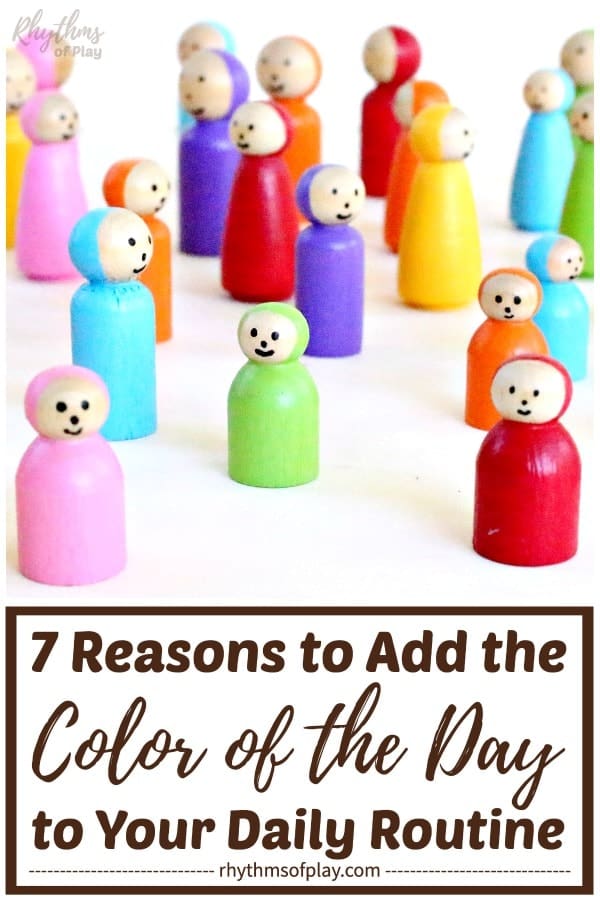
More Positive Parenting Articles
- How to Raise a Helper
- Best Parenting Books
- Self-Regulation Strategies for Kids: What Are They and Why Do They Matter?
- Yoga for Kids: Everything You Need to Know!
- 7 Teething Tips to Naturally Soothe Your Baby
- The Easiest Way to Teach Kids to Have Good Manners
- Best Positive Discipline Books for Parents and Educators

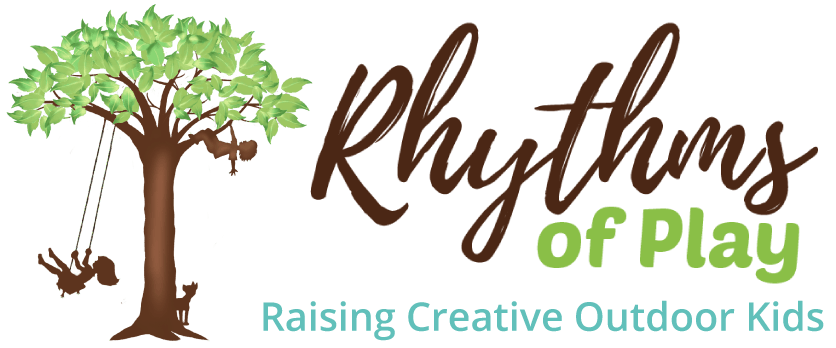

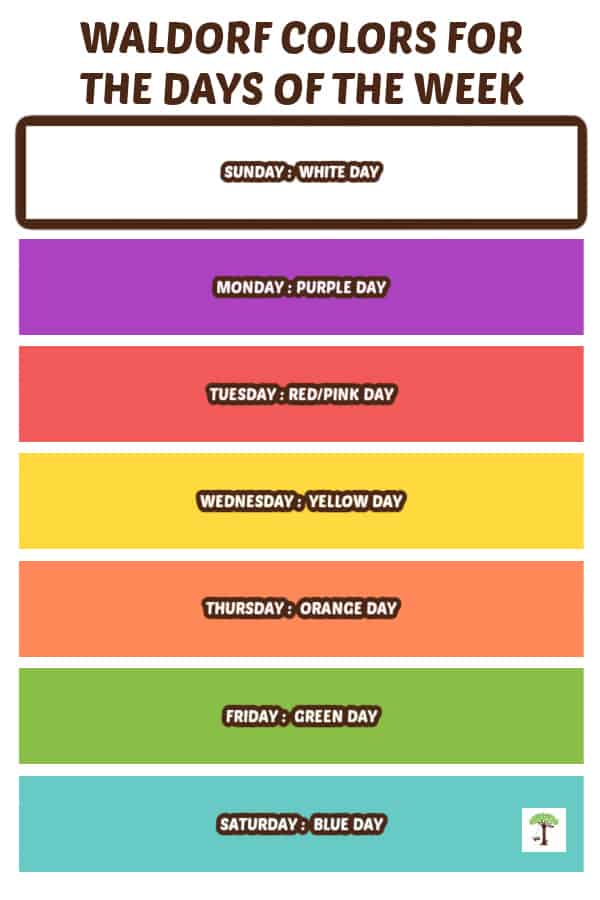


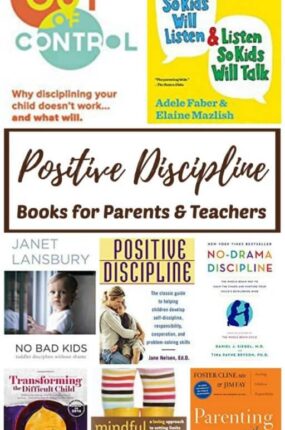

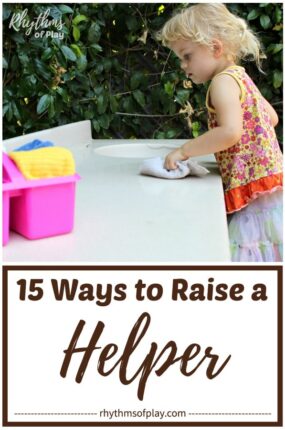
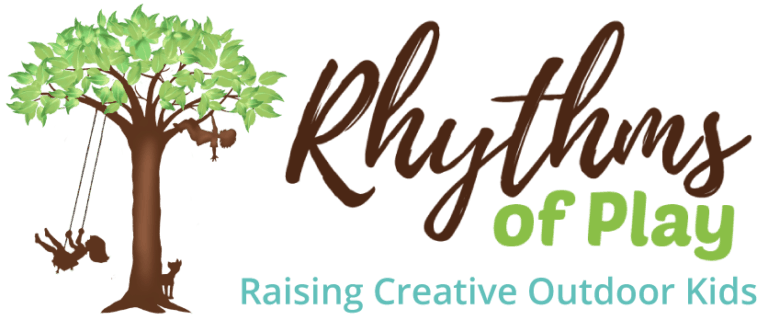
I love structure myself and can see the benefits of raising kids in a structured form but I also let myself the freedom of choosing where to go out. We always go out in the mornings when kids don’t go to preschool but we decide on the spot where to go : park, library or any other places. What happens if it’s raining on a yellow or purple day and you can’t go to the park? Doesn’t this lead to a melt down?
This is a great point Stef. We have rainy day special activities that come out so we haven’t had a melt down about that yet. I really find being regular about when we do things supports my child and the children in my care. It makes our day run smoothly and we get a lot more done. With that said, what works for one child may not necessarily work for another. It’s important to learn what works best for our children and do our best to meet those needs.
This is such a sweet idea! x
Thanks Jess!
Wow. I never thought of doing this and it is so simple. I may have to try this with my family. Thanks
You’re welcome Alecia, it really works for us and is oh so helpful when dealing with a sensitive child like ours 🙂
This is a great idea. My littlest one does so much better when she has a schedule. And not just the kids even- this would help my mom cut out the 15 minutes she spends every day deciding what to wear to work, lol!
Thank you for every other informative blog!
Thanks, Mervin! So glad you approve!
great post and ideas thanks for sharing it with us
Your welcome! Using the color of the day makes life so much more colorful and fun! Enjoy!
I love this article and I understand why colours of the day are important. What I don’t understand is where the order of the colours came from? Why is Monday purple? Tuesday red etc? Does anyone know the origination of the choice of colours and why that order was chosen? I thought perhaps the colours were based on the planets, Tuesday, Mars so red but only two make sense this way to me! Any insights?! Many thanks.
Hi Nicola!
I have often wondered the same thing, and have not found an answer. I wondered why it did not go in rainbow order and searched for Steiner’s original thoughts to learn why, but never found them. I have also asked a few Waldorf instructors and so far, no one knows for sure. I do know that Rudolf Steiner studied color and worked to expand upon Goethe’s theory on color, and the placement on the color wheel may have something to do with it? If you ever find out, please come back and comment again to let me know!
The reasons the colors are as they are is actually based upon the names of the days of the week (but in Latin). The Latin days of the weeks were named for the 7 known “planets” visible to the naked eye (“planet” refers to a moving “star” or celestial “body,” because the ancient world did not see these bodies in the sky as they are now seen in mainstream/current times). The sun is white at high noon. The moon acts a lot like “black light” (those bulb often look purple; indeed it is largely “ultraviolet A”). Tuesday is “Mardi” in French and “Martes” in Spanish, named for Mars, the “red planet.” Etc. The symbolic significances are traditional to Western civilization. I’ve heard Steiner recommended different colors (than Westerners would expect) for different cultures (Hindu, Somali, etc.) because color symbolism is different. This symbolism “should” have made the memorization of the weekly colors easier for adults. If you knew the planets associated with the days, the color-associations would be more intuitive, perhaps even obvious! One of the more “philosophical” benefits of the “colors of the day” is that it can give “leaps” of insight into “why” a lot of things are the way they are, including why a play might be costumed and lit with a tri-chromatic color-scheme, or why certain colors might be used in a particular poet’s poem. Color is hugely versatile. You can keep it light and fun, or the more “broody” among us can turn to them to glean clues to “Life’s secrets.” I’m sorry I don’t have sources to cite for this information. I’ve worked amidst Steiner education since 2002, and I’m in the process of moving, so all my Steiner/Waldorf books are boxed up. I only found this blog as I was searching online for aprons to wear to work, and I thought it might be fun to see if any Waldorfy types made or sold such things… Just couldn’t help answering…
Just realized I didn’t explain “how” the moon “acts light (purply) black light.” Ever notice how white things seem to glow in full moonlight (as long as no artificial light is interfering)? Black light sure does the same thing to the white shoelaces on my sneakers, just even more so…
Thank you Charmane for your thoughtful comments. Your insights as a Waldorf educator are very informative. I am aware of the daily planets (and grains), but did not know that they were the reason for the colors of the week. That makes perfect sense, thank you! I always appreciate learning more about Steiner and Waldorf education by those that have been committed to it for as long as you have. Thank you for your awareness. Finding direct answers to the questions I seek about Waldorf education is often like finding a needle in a haystack. Sometimes I will read an entire lecture just to find the answer to one question that I have!
Thanks again for your comments,
Nell
Hello 🙂
I’m relatively new to both world of Waldorf and parenting.
I’m wondering the rationale/intentionality behind the the order of colors for the days of the week and why they are in a order than the colors of the rainbow. I imagine there is an answer, I just can’t find it ANYWHERE I have looked.
Thanks,
Sarah
Hi Sarah,
Great question, I have been told that the colors of the days of the week have to do with the planets, and have planned to research it a bit more myself. I will publish it here when I do!
Thanks for asking,
Nell